 Doctors Bennet Omalu and Julian Bailes are now looking into ways to help further concussion research
Doctors Bennet Omalu and Julian Bailes are now looking into ways to help further concussion researchIfeakandu.
That’s Dr. Bennet Omalu’s middle name.
In the Igbo language of his native, Nigeria, it means “life is the greatest gift of all.”
So it’s somewhat ironic that a man who’s named for the miracle of life has dedicated his life to studying the secrets told in death.
The journey began in 2002.
Then a 34-year-old medical examiner in Pittsburgh, Omalu performed a routine autopsy on former Steelers’ offensive lineman Mike Webster.
Pittsburgh’s legendary All-Pro center had died suddenly from a heart attack at the age of 50. In the final years of his life, he’d been prone to bouts of memory loss and had gotten increasingly desperate, depressed and violent.
As a forensic neuropathologist by training, Omalu was used to looking at the brains of the dead, and a hunch told him that Webster’s was trying to tell him something. Extensive testing revealed that at the time of Webster's death, he was suffering from a kind of dementia that was likely the result of multiple concussions and blows to the head sustained throughout his football career. His brain had degenerated to the point that it resembled an Alzheimer’s-like dementia.
Omalu diagnosed the very first case of gridiron dementia in a deceased retired football player. He named the disease Chronic Traumatic Encephalopathy, or CTE.
RESEARCH BELIEVABLE
Now 41 and working as a medical examiner in California, Omalu has established himself at the forefront of concussion research. There is irrefutable evidence to prove that concussions sustained in sports can lead to permanent brain damage and degenerative brain disease – particularly in contact sports such as football.
People believe him now – especially after a landmark discovery he announced with his partner, West Virginia University Hospital’s head of neurosurgery Dr. Julian Bailes, earlier this summer.
On June 28, at a press conference in Morgantown, W.Va., Bailes and Omalu revealed that they’d found evidence of CTE in Chris Henry.
Henry was a 26-year-old wide receiver with the Cincinnati Bengals who died in December 2009 from injuries sustained after falling out the back of a moving pickup truck. When the receiver’s family first asked Omalu and Bailes to examine his brain, the doctors didn’t expect to find any evidence of CTE.
Henry was young and at the time of his death he was still an active NFL player. More importantly, he had no known history of concussion throughout his pro and college career, and was not known as a big-time hitter.
Both doctors were surprised when test samples of Henry’s brain came back dotted with brown splotches known as tau protein, a toxin that is typically a sign of Alzheimer’s disease and dementia.
The discovery of CTE in Henry’s brain pushed the limits of everything the doctors thought they knew about the cause of the disease and reaffirmed that CTE wasn’t just caused by concussions.
Repetitive blows to the head that a football player is likely to sustain on a regular basis throughout his career can potentially result in the same disease.
The announcement kicked the football world into a frightened tizzy, and dozens of well-regarded national columnists fed the frenzy by churning out reams of copy overnight hypothesizing on what this meant for football’s existence.
THE STUDY WON'T END
Submitted photoDoctors Bennet Omalu and Julian Bailes are now looking into ways to help further concussion research.
In the six weeks that have passed since Omalu and Bailes announced their findings, the buzz has faded some.
As the NFL goes through its preseason schedule, and college and high school teams around the country fall back into the comfortable routine of two-a-days under the scorching end-of-summer heat, the media’s initial panic has dulled and morphed into a hum of excitement as America gears up for its favorite form of fall entertainment – football.
But Omalu and Bailes are far from done.
Now that they’ve established the legitimacy of their findings within the medical community, it’s time, the doctors say, to look beyond.
“We are moving the science forward. I’m currently working on a paper on the Omalu-Bailes classification of CTE,” Omalu says over the phone from his home in Lodi, Calif. where at 6 a.m. on a Monday morning, it’s not yet light out.
The paper will outline the different signs of CTE for the benefit of doctors all over the country.
“We’re trying to educate people to recognize CTE and detail the different manifestations of it so that more doctors will be able to identify it,” Omalu says. “When you educate other doctors on how to identify this disease you’re more likely to identify other cases and, in time, identify ways to kill the disease.”
With all the recent advancements in concussion management techniques, doctors such as Omalu and Bailes have shifted their focus from reaction to prevention, and – hopefully -- cure.
Last month, Bailes wrote two papers about a nutritional supplement that could revolutionize the treatment of concussions.
Published in the July 16 edition of the Journal of Neurosurgery, his findings were based on experiments conducted on laboratory rats and showed that an omega-3 fatty acid called DHA (most commonly found in infant formula) can help repair torn brain fibers if consumed after a concussion and help to reduce the adverse effects of concussions if taken regularly.
DHA is “technically a nutritional supplement that brains are made of,” Bailes said. “I think it’s a significant finding that should make a significant impact on anyone from athletes to military concussion victims.”
At the moment, there is no known cure for a concussion. According to Bailes, patients are given sleeping pills, pain medication and anti-depressants to help deal with the effects, but there is no medicine to prevent it.
REVEALING TESTS
What also has arisen from their research are the issues of genetic markers and genetic testing. Bailes and Omalu have found that 70 percent of the late athletes whose brains they have studied all shared one common gene – Apolipoprotein E-3, also known as ApoE-3
Genetic testing is still a Pandora’s box rife with ethical dilemmas. Yet, the prevalence of ApoE-3 in such a high percentage of the doctors’ CTE-positive subjects simply begs for more research.
It’s a prime example of how the Chris Henry case has raised as many questions as it’s answered.
“Chris Henry falls within the 70 percent-positive for that gene. So how strongly do our early findings provide a clue as to the risk factors of CTE? We have the world’s largest number of experts, but a relatively small [sample] number,” Bailes said. “Is this number enough?”
Dr. Wayne Sebastianelli, the director of athletic medicine at Penn State University, thinks it’s theoretically possible to start screening players for the presence of ApoE-3, but that it will be expensive.
“It’s going to cost some money,” says Sebastianelli, who serves as the team doctor for the Nittany Lions’ football team. “But if you’re paying people $30 million over four years, you might want to get the [genetic] marker test. It might become a factor in the decision.
“If you have someone who has had three concussions, and they have the marker, you may not offer them more than a one-year deal. There’s always going to be somebody more genetically predisposed to concussion.”
To the average football fan, genetic testing for concussion susceptibility might sound a little extreme, but it’s a big part of the brainstorming now going around in medical circles as doctors try to come up with creative ways to keep athletes safe.
The consensus is that football, especially at the professional and collegiate level is getting faster, and the hits are getting harder.
According to Bailes, studies have shown that game speed has increased about 8 percent over the last 40 years, and the modern football player is about 20 percent larger.
“We’ve done a lot of research on the numbers. The game is so fast now that the resulting acceleration and deceleration, and the momentum changes are leading to much high energies,” Bailes said.
SOME RULES JUST WON'T PASS
The doctors aren’t the only ones worried about the ferocity of the modern game.
“The truth of the matter is… somebody is going to die here in the NFL,” Cincinnati Bengals quarterback Carson Palmer said in an interview with Sports Illustrated last September.
Bailes and Omalu are big advocates of what they call “taking the head out of the game.”
For instance, Bailes suggests taking linemen out of the three-point stance and having them start in an upright position.
“Linemen get more blows in there because they are doing every play head-to-head,” Bailes said.
Perhaps it’s even time to introduce some new rules.
Sebastianelli proffers a suggestion that he knows will meet with vociferous protests at all levels of the game: introducing a weight limit for each of the different positions.
“Why can’t you put a weight restriction on positions? We do it in wrestling,” Sebastianelli said. “It’ll cut down on doping – if you’ve got to make weight, you can’t play with anabolics.
“But that’s going to be so hotly contested, I’ll never see that happen.”
Another measure could be to limit the area that plays can unfold within.
“You look at some of these formations they are running nowadays, and between the defensive back and the wideout, there may be a 30-yard head start,” Sebastianelli said.
That basically means one guy has more time and space to get a big running start before hurling himself into his opponent at high force.
“You may need to change some of the formations [and mandate] that plays can’t spread out over more than eight to 10 yards instead of 25 yards,” Sebastianelli said.
Players and coaches alike balk at what many consider drastic measures that will forever alter the game.
Many also point to the constantly-evolving helmet technologies as one way to guard against concussions.
But Bailes says people tend to overestimate the helmet’s protective qualities.
“I don’t want to discount the importance of helmets. I think it’s important for athletes and their parents to know that you [should] get the best helmet you can, and the best equipment. But I do think the helmet is obviously limited,” Bailes says. “I think it’s been overlooked and overly optimistic that the helmet is the answer.”
Even though spearing is against the rules and most coaches teach players to not lead with their heads, there are still players who run helmet-first into a tackle. In those instances, the bulky, heavy modern helmets can give the athlete a false sense of security, Omalu says, drawing a contrast between football and rugby players to explain why a helmet can be used as a weapon.
While concussions are also rampant in rugby, “the good thing about [rugby players] is that they don’t wear helmets,” Omalu said. “So if you’re always hitting with your head, it’s going to hurt you.”
FAIR WARNING
+
After the years of opposition he faced when he first tried to publicize CTE, Omalu has firsthand experience with animosity from high-placed people in positions of power.
But he would like the world to know that contrary to what some of his detractors originally believed, he is not out to derail the multi-billion dollar industry that is football and its place in American society.
All he wants is for people to realize that there are serious, potentially life-damaging risks associated with playing the game.
“Like cigarette smoking is dangerous to your health, and it is fully explained to every individual, qualify it that by playing football, you stand the risk of suffering permanent brain damage,” Omalu said. “Don’t hold back that information from the public. Full disclosure.”
This, after all, is the legacy of Mike Webster, Chris Henry and all the other athletes whose brains have helped to advance the study of CTE.
Their deaths have brought answers to light. But even those answers open more questions every day.

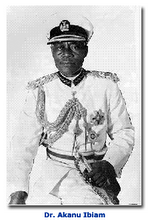
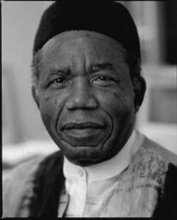

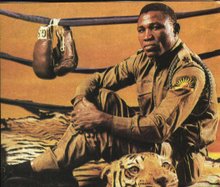
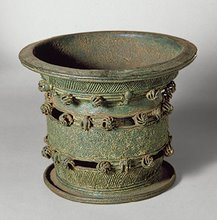

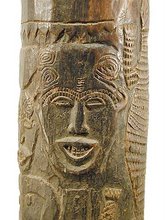
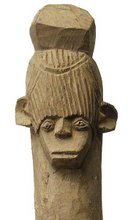
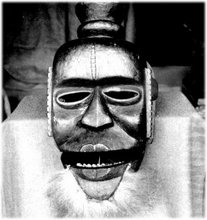

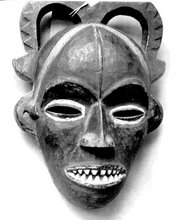
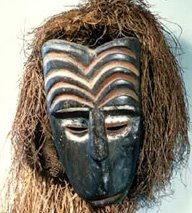
No comments:
Post a Comment